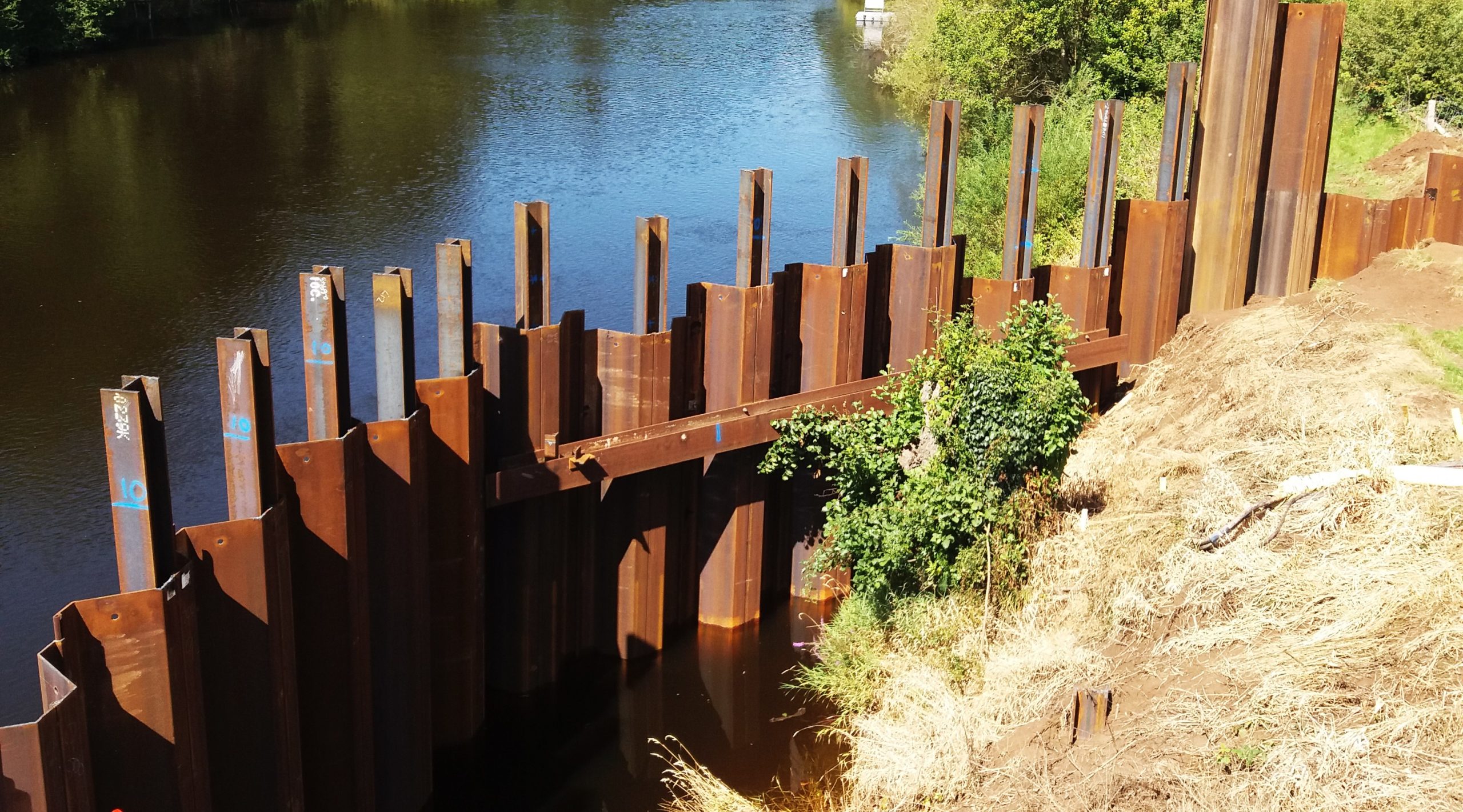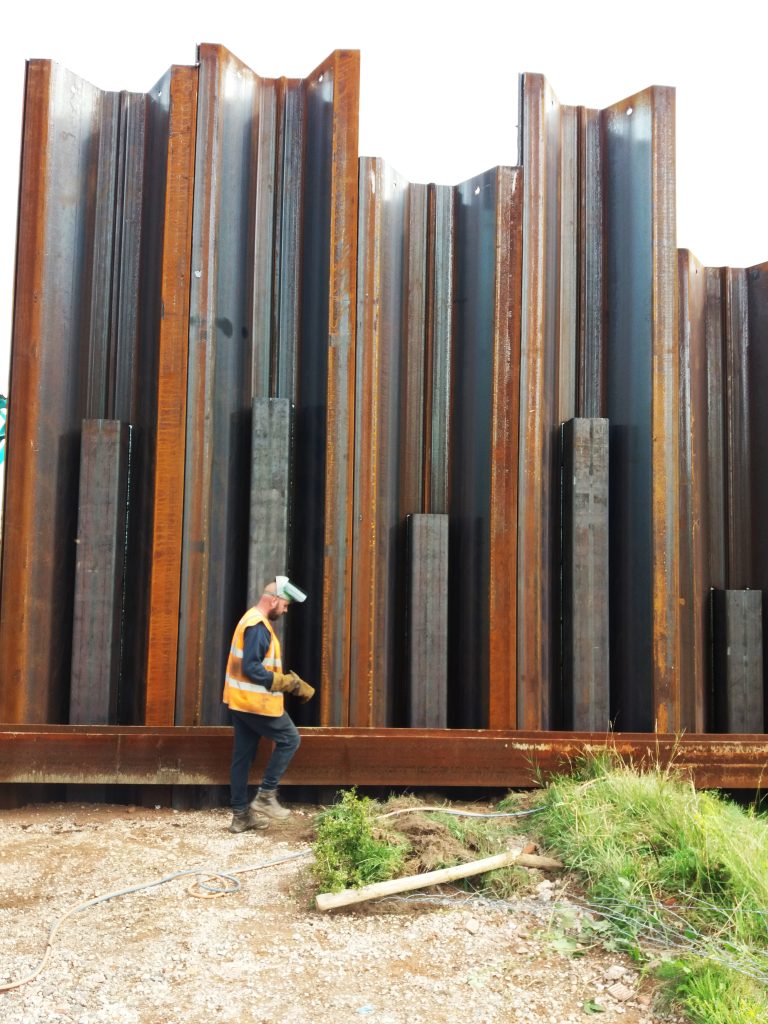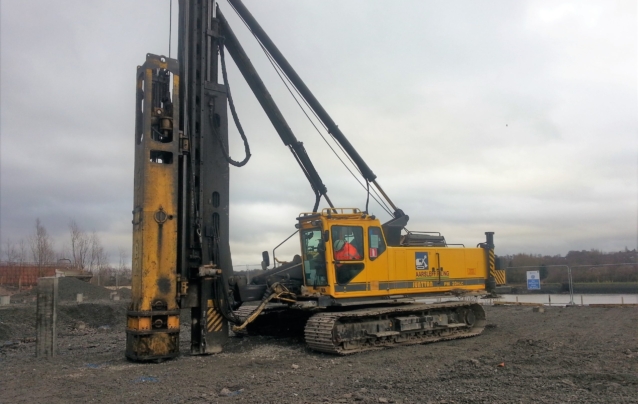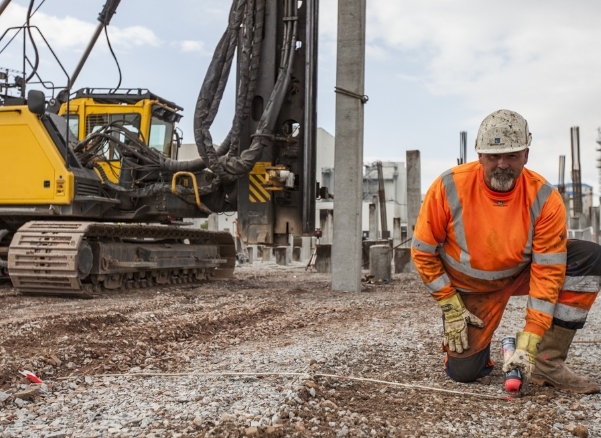Birmingham Resilience Scheme
SHEET PILED COFFERDAM INSTALLED IN STOURPORT AS PART OF THE BIRMINGHAM RESILIENCE SCHEME

Project Description
DATA 154 No. AZ26 steel sheet piles (section modulus 2600cm3/m of max length 8.0m). Integral enhanced toe support system comprising of 53 No. 254/254/132 S355 JO H-Section piles. Prefabricated box section connection detailing at 1.26m centre to centre
CLIENT Severn Trent
CONTRACTOR J Murphy Group
CONSTRUCTION PERIOD 21st July 2017 – 13th Sep 2017
J Murphy Group awarded Aarsleff the contract to install a
temporary sheet piled cofferdam on the River Severn, as
part of the £300 Million ‘Birmingham Resilience’ Scheme. The
scheme is one of Severn Trent’s largest ever infrastructure
projects, specifically to develop an alternative water supply for
Birmingham to complement the Elan Valley Aqueduct (EVA). The
Birmingham Resilience Project will create a new abstraction point
and pumping station on the River Severn, at Lickhill Quarry near
Stourport, to which water will then be pumped along a new 25km
pipeline, through pipes with a 1.0m diameter, to Frankley Water
Treatment Works. Aarsleff’s sheet piling works allowed a dry
working area for J Murphy to construct the secant piling to the
intake structure. Sheet piles will then be subsequently removed
and the entire structure submerged. Water is to be taken from
the River Severn which will provide a new source for the
aqueduct, while maintenance takes place on the original EVA.
When the resilience plan is in operation, the city of Birmingham
will be drawing water from at least four sources, rather than just
one
Early contractor engagement between J Murphy and Aarsleff
identified significant technical deficiencies in the early
engineering proposals for the temporary works cofferdam.
Aarsleff’s proposed design was safer, quicker and cheaper with
significantly less risk to the environment, their clients program
and operatives. Aarsleff installed the bespoke temporary sheet
piled cofferdam which comprised 154 No. AZ26-700 steel sheet
piles, with an integral enhanced toe support system comprising
of 53 No. H-Section piles. These were required due to the very
shallow underlying bedrock, which only allowed for a limited
sheet pile penetration. Access was provided by a temporary
access works platform allowing safe working over water.
Aarsleff employed a high frequency vibratory hammer and an
impact hammer to drive its piles (using panel driving techniques)
and employed a 110-tonne capacity mobile crane operating at a
maximum 25m radius to unload and handle piles and hammers.
Senior technical estimator Ashley Carter said:
“This was a technically challenging scheme to be involved with
requiring a lateral thinking approach to resolving the challenging
problems. The prestigious project demonstrates the high level of
experience and expertise Aarsleff’s sheet piling department can
offer to its clients”.
Aside from delivering the project on time and within budget,
Aarsleff were also able to reduce risk and environmental damage.
Risk reduction through application of practical construction
methodology, and Reduction in Environmental impact, (as
the original scheme involved drilling underwater and spoil
flushed directly into the watercourse). Steel sheet piles will also
be recovered for re-use making this element of the scheme
carbon neutral. Aarsleff Ground Engineering took the technical
challenge and applied sense and reason to develop a practical,
constructible and engineered solution, which benefitted all
parties for the aforementioned Environmental, Commercial
and Safety aspects. Meeting a tight construction programme
at the front end of a long complex scheme gives Aarsleff great
satisfaction.
Case Study


Please enter your details to download this document
The Latest. News, podcasts & projects



















